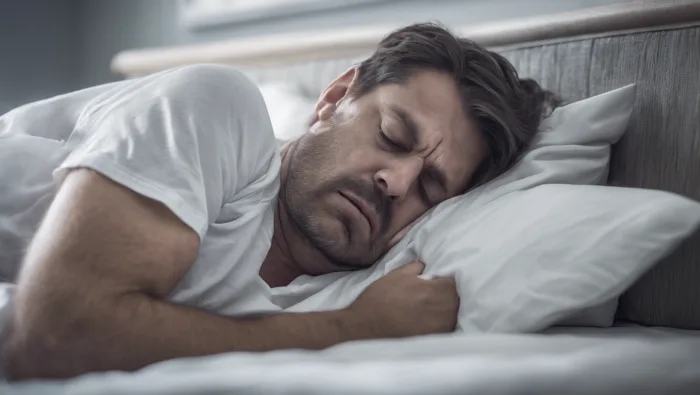Types of Sleep Apnea
Sleep apnea is a repeated interruptions in breathing during sleep. These interruptions can last from a few seconds to a minute or longer and occur multiple times throughout the night. There are three main types of sleep apnea.
- Obstructive Sleep Apnea (OSA)
- Central Sleep Apnea (CSA)
- Complex (Mixed) Sleep Apnea.

For Sleep Study or to rent/purchase CPAP BiPAP AVAPs Oxygen Concentrator, you may call +91 63096 57730.
Causes
Obstructive Sleep Apnea (OSA):
- Physical Obstructions: The most common cause of OSA is the relaxation of the muscles in the throat, including the tongue, during sleep. This relaxation can cause the airway to narrow or close, blocking airflow.
- Excess Weight: Obesity is a significant risk factor. Fat deposits around the upper airway can obstruct breathing.
- Anatomical Factors: Structural issues such as a thick neck, narrow airway, large tonsils or adenoids, deviated septum, or a small jaw can contribute to OSA.
- Alcohol and Sedative Use: Alcohol, sedatives, and tranquilizers relax the throat muscles, increasing the risk of airway collapse.
- Smoking: Smoking can increase inflammation and fluid retention in the upper airway, worsening OSA.
- Family History: A family history of sleep apnea can increase the risk of developing the condition.
Central Sleep Apnea (CSA):
- Neurological Conditions: CSA occurs when the brain fails to send proper signals to the muscles that control breathing. It is often associated with conditions like heart failure, stroke, brain injury, or neurodegenerative diseases.
- High Altitudes: Sleeping at high altitudes can cause CSA due to lower oxygen levels.
- Opioid Use: Long-term use of opioid medications can affect the brain’s breathing centers.
Complex (Mixed) Sleep Apnea:
- Combination of OSA and CSA: This type occurs when someone has both obstructive and central sleep apnea events.
← Video → courtesy by Respiratory Therapy Zone
Symptoms
- Loud Snoring: Particularly in OSA, loud and chronic snoring is a common symptom, although not everyone who snores has sleep apnea.
- Episodes of Breathing Pauses: Observed by another person, these pauses can lead to gasping or choking during sleep.
- Excessive Daytime Sleepiness: Feeling excessively tired or falling asleep during the day, even after a full night’s sleep.
- Morning Headaches: Due to low oxygen levels and sleep disruptions.
- Dry Mouth or Sore Throat: Often noticed upon waking.
- Difficulty Concentrating or Memory Problems: Cognitive impairments due to disrupted sleep.
- Mood Changes: Irritability, depression, or anxiety due to poor sleep quality.
- Frequent Nighttime Urination (Nocturia): Needing to urinate frequently during the night.
- Insomnia or Restless Sleep: Difficulty staying asleep or frequent awakenings.
Treatment options
1. Lifestyle Changes:
- Weight Loss: Losing excess weight can help reduce or eliminate OSA in many cases.
- Sleep Position Adjustment: Sleeping on the side instead of the back can prevent airway obstruction in mild cases of OSA.
- Avoid Alcohol and Sedatives: These substances relax throat muscles and can worsen sleep apnea.
- Smoking Cessation: Quitting smoking can reduce inflammation and improve symptoms.
2. Positive Airway Pressure (PAP) Therapy:
- Continuous Positive Airway Pressure (CPAP): The most common and effective treatment for OSA. It involves wearing a mask over the nose or mouth that provides a constant stream of air to keep the airway open during sleep.
- Bi-level Positive Airway Pressure (BiPAP): Provides different pressures for inhalation and exhalation, used for people who cannot tolerate CPAP or have CSA.
- Adaptive Servo-Ventilation (ASV): A newer device used to treat CSA and complex sleep apnea by adjusting air pressure continuously to stabilize breathing patterns.
3. Oral Appliances:
- Mandibular Advancement Devices (MAD): Custom-fitted devices that reposition the lower jaw and tongue to keep the airway open. Useful for mild to moderate OSA.
4. Surgical Options:
- Uvulopalatopharyngoplasty (UPPP): Surgery to remove excess tissue from the throat to widen the airway.
- Genioglossus Advancement (GA): Repositions the tongue muscle attachment to prevent airway collapse.
- Maxillomandibular Advancement (MMA): Moves the upper and lower jaw forward to increase the size of the airway.
- Tonsillectomy or Adenoidectomy: Removal of enlarged tonsils or adenoids that may be blocking the airway.
- Tracheostomy: Creating a direct airway through the neck, used in severe, life-threatening cases.
5. Treatment for Underlying Conditions:
- Managing any associated conditions like heart failure, neurological disorders, or using devices for conditions like central sleep apnea.
6. Supplemental Oxygen:
- Using oxygen at night, especially in cases of CSA, may help improve oxygen levels during sleep.
7. Nerve Stimulation Therapy:
- Hypoglossal Nerve Stimulation: An implantable device that stimulates the nerves controlling the tongue muscles, preventing airway collapse.




